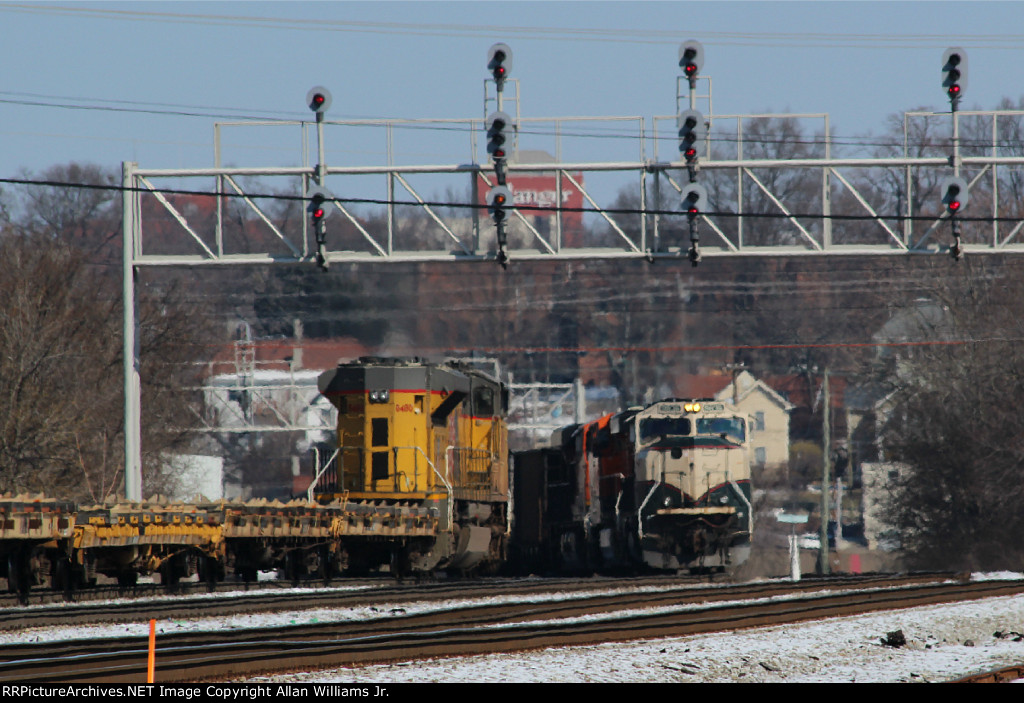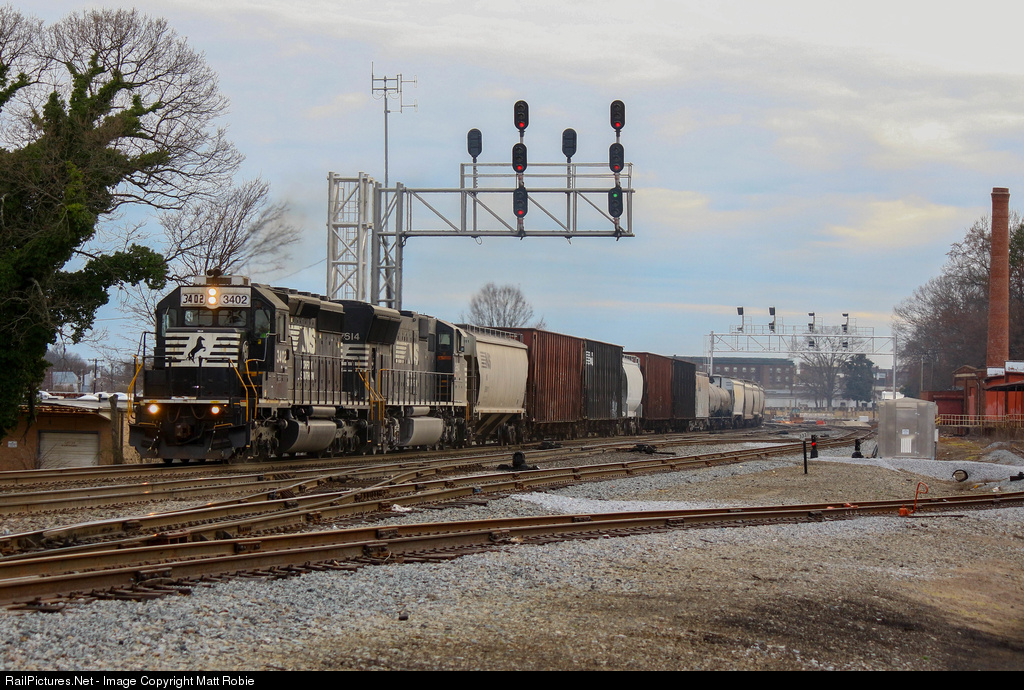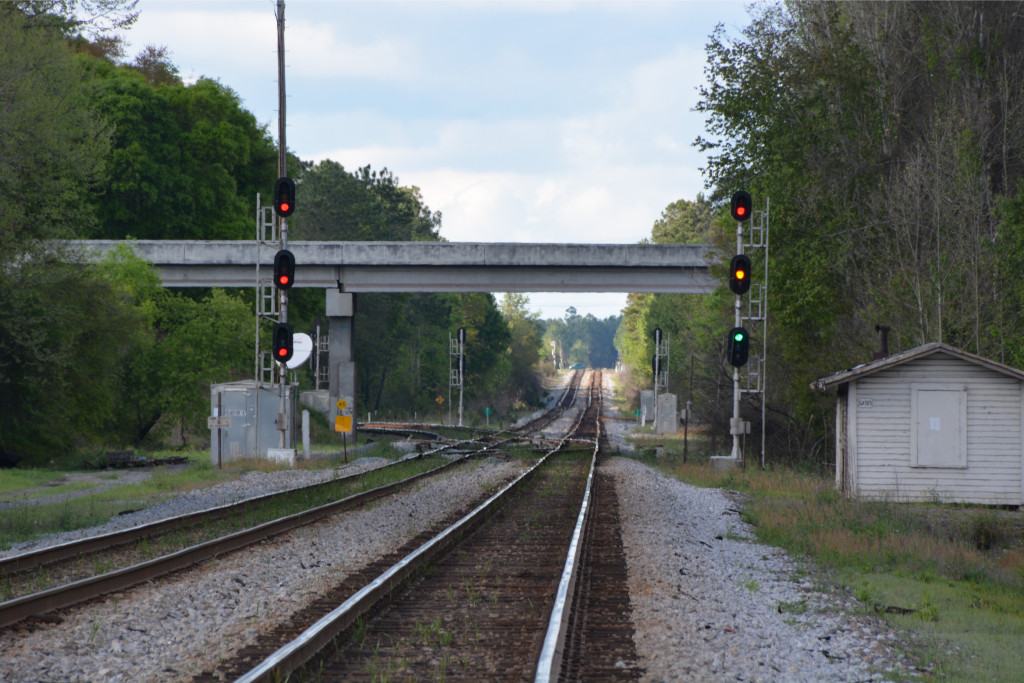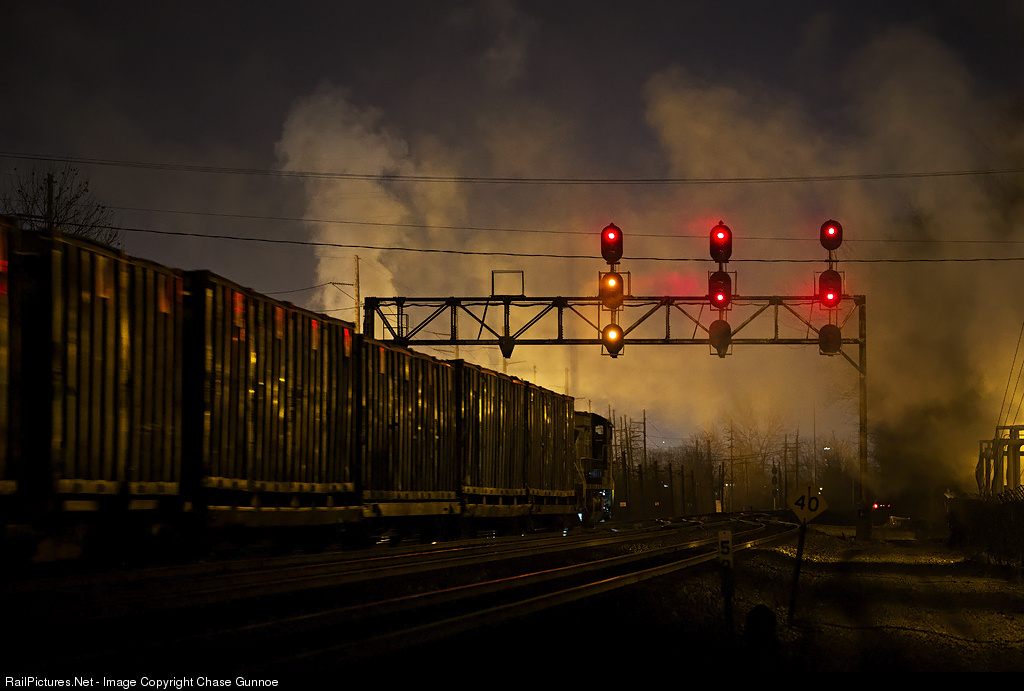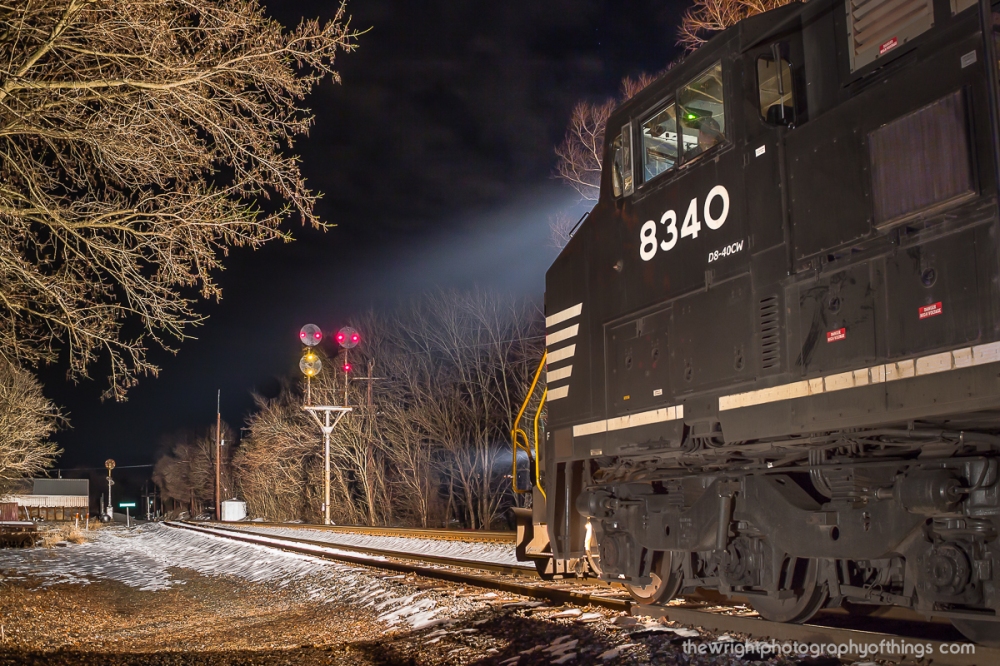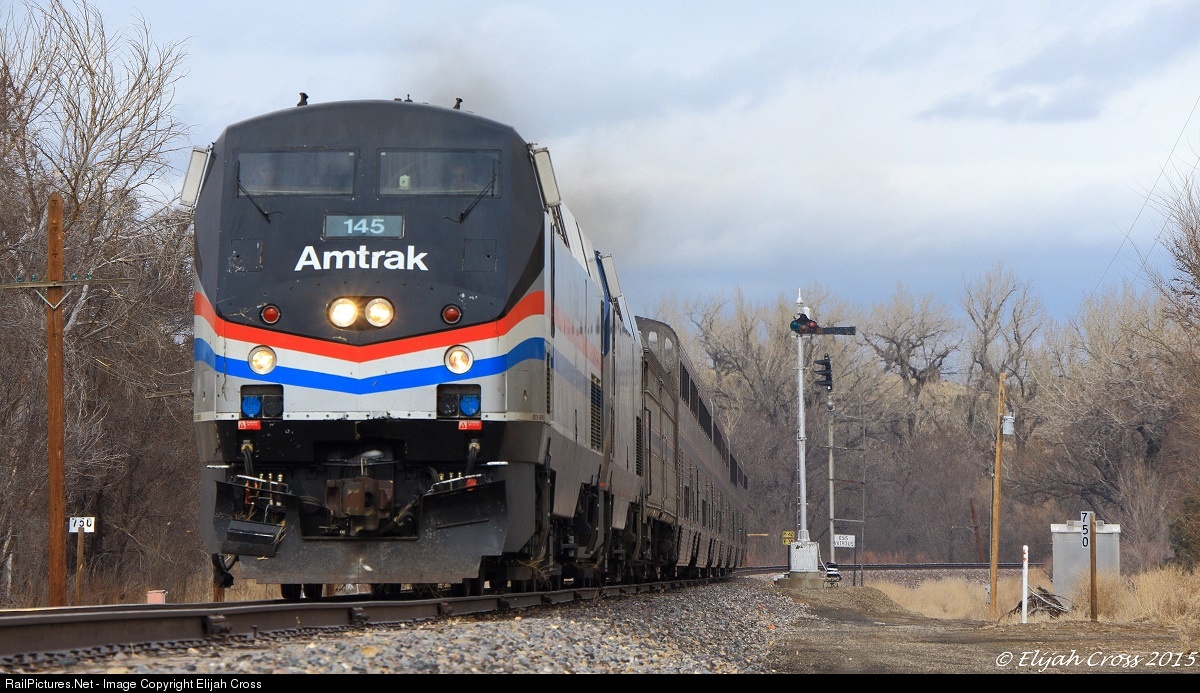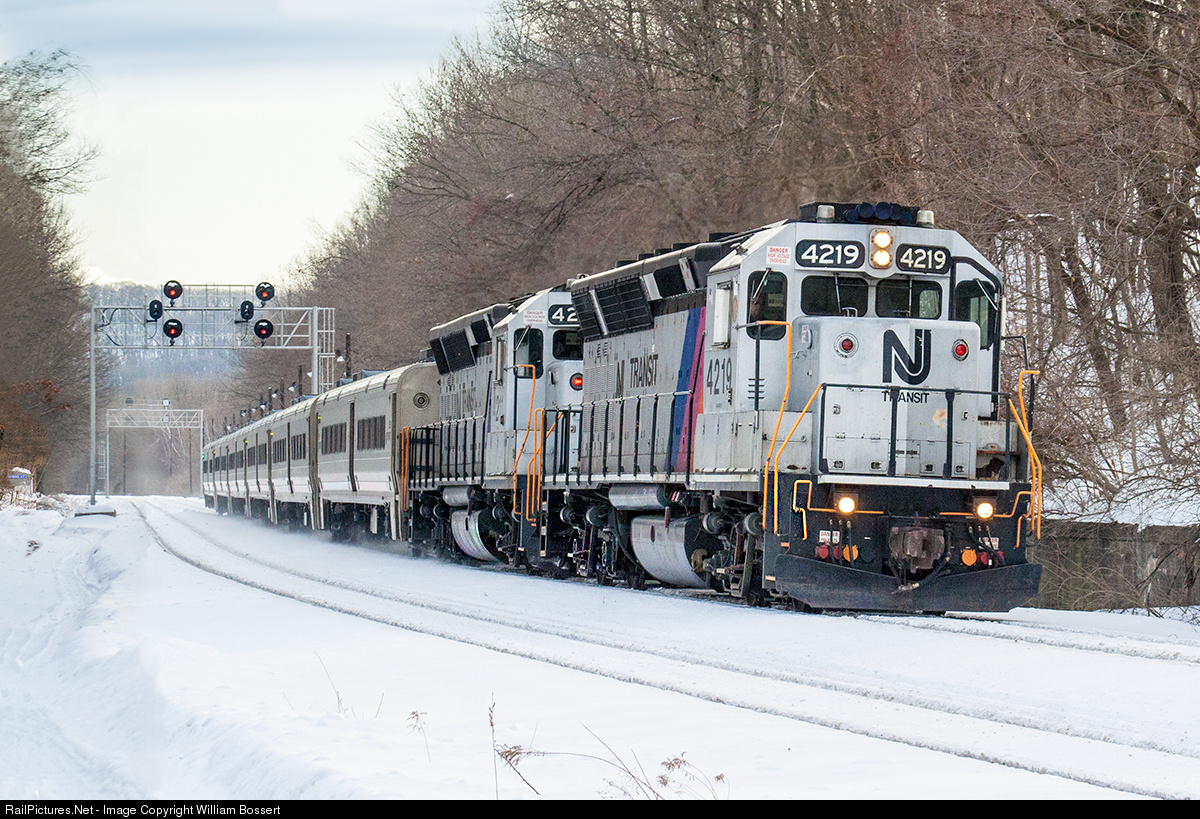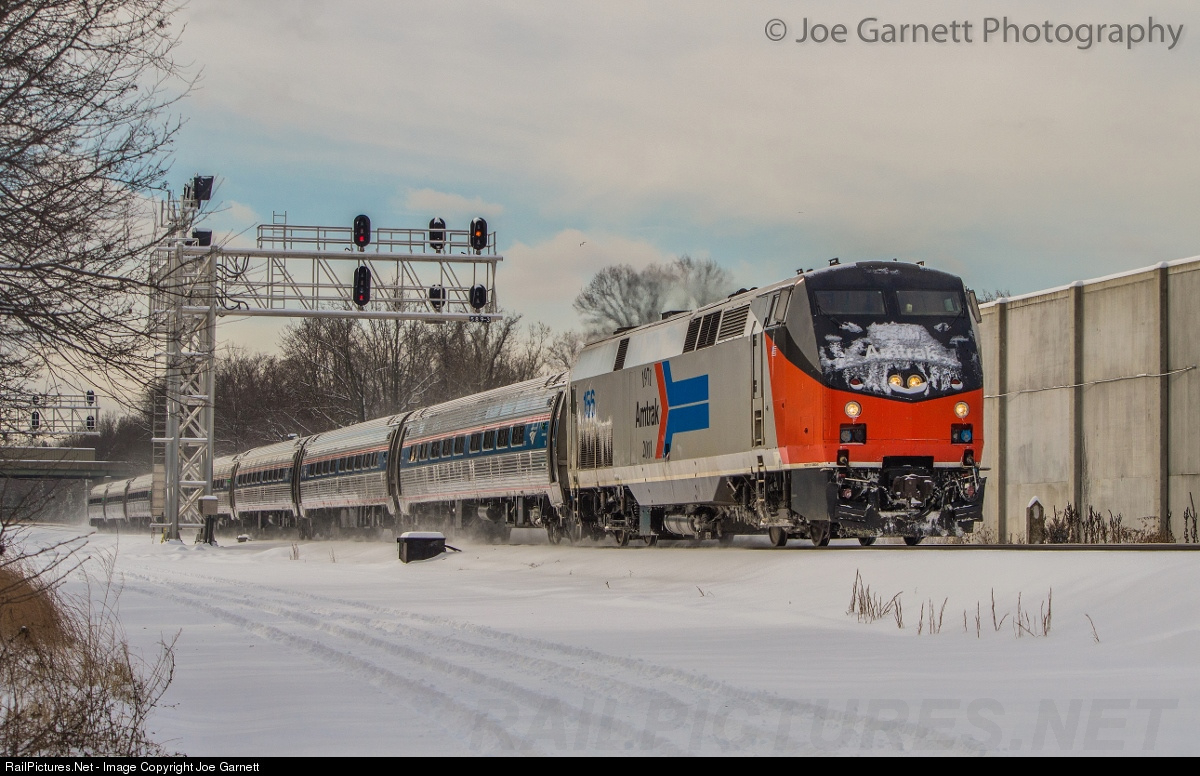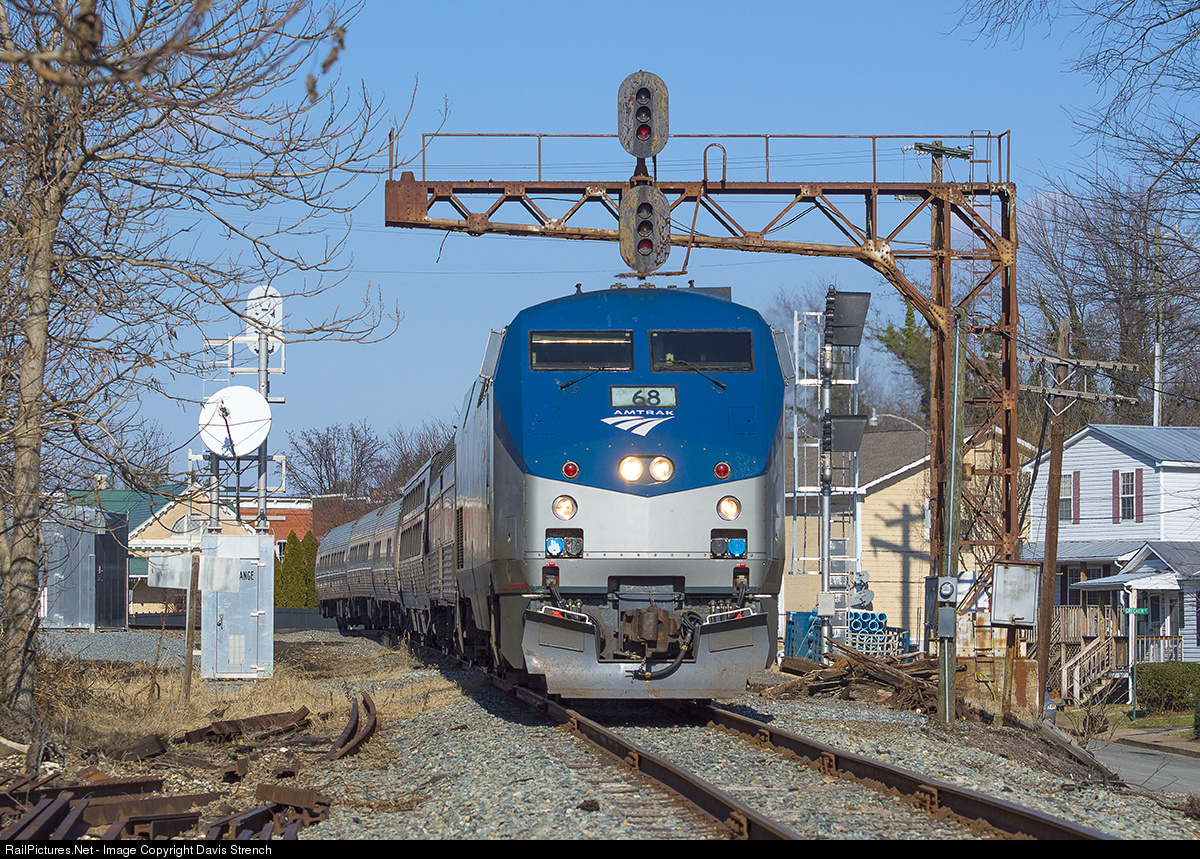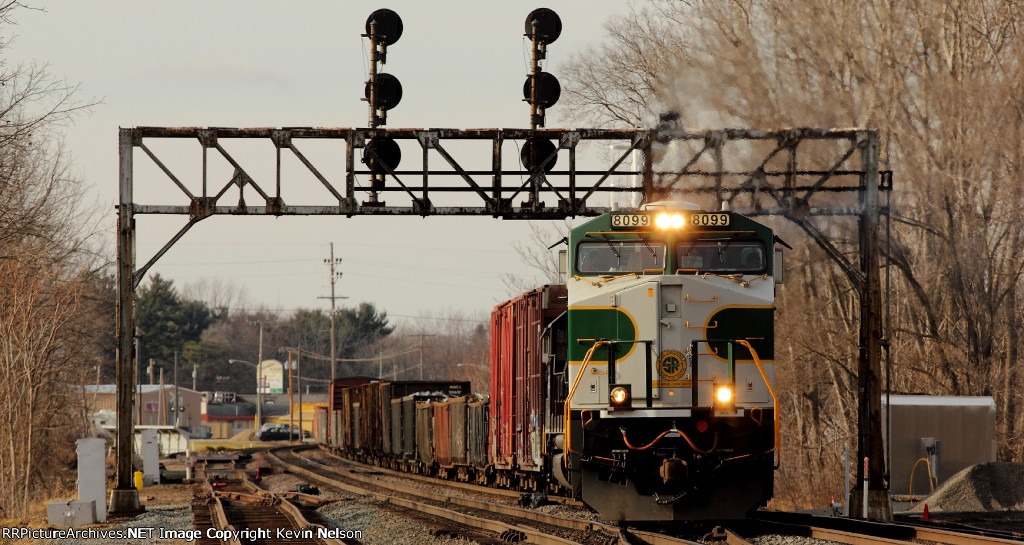It is already challenging to catch interesting signal indications lit up in the wild, but indications featuring the third, or lowest head on North American three headed signal masts are especially uncommon. Catering to slow speed routes on main line track, the third head is already in a hole since because it is almost a truism that slow speeds are applied to those movements that don't happen very often. Moreover the lower head tends to be employed on oddball combination indications that again, are uncommon by definition. Over the last few months I have collected a sample of interesting indications that use the third head.
Here here we see a 1980's Southern style signal gantry in Chattanooga, TN. This one is notable because it features 4 great examples of the Southern's practice of "bottom yellow restricting". The two center heads are pretty straightforward with a yellow lamp on the bottom head that illuminates for Restricting movements into a yard. The two outer signals have a large gap representing a virtual middle signal head to save on costs. Here the UP #5480 is about to take a R/R/Y Restricting into the yard.
Here we see a modern Southern cantilever, but this time the bottom heads contain a full set of R-Y-G lights. The Southern uses a weak route form of signaling and while each head is not associated with any particular speed, the bottom head is typically associated with routes slower than those represented by the middle head.
Here at the busy junction in Folkston, GA we see a 3x3 CSX signal using the bottom head to indicate Medium Approach Medium as the 2-track branch to Waycross quickly shrinks to back to a single track one block length away from the junction. Don't let the photo fool you. That lower head is flashing green since under Seaboard rules R/Y/G is still Medium Approach Slow.
Switching slightly to one of CSX's throwback signaling systems we see a night shot of one of the surviving C&O signal bridges in the Russell, KY complex. Because of R/Y Restricting indications, Medium (or Diverging) Approach indications have often needed to be squeezed in to the aspect chart. Typically this is done with R/Y/R. There is also the less common NORAC approach with R/*Y*. The C&O however took a rather large leap off the reservation by using R/Y/Y for Medium Approach, as seen here.
A blog devoted to explaining the ins and outs of North American railroad signaling, past, present and future. This blog seeks to preserve through photo documentation the great diversity and technical ingenuity of 20th century signaling and interlocking hardware and technology. Related topics cover interlocking towers and railroad communications infrastructure.
Note, due to a web hosting failure some of the photos and links may be unavailable.
Search This Blog
Tuesday, March 31, 2015
Tuesday, March 24, 2015
F Tower to "Close", Times Square Tower to Move
So about a month ago I reported that CSX was studying closing the famed F Tower, in Fostoria, Ohio. Last week the word came down that the tower would be de-staffed at the end of the month (3/31/2015). Ironically the last straw may have been an incident where the operator got sick and needed a medical transport from the site. The IP dispatcher was able to take over F Tower's territory, but the resulting traffic jam took almost a day to clear. I say ironically because the result of the tower going down seemed to prove its worth.
Now I used the term "closed" in the opening because F Tower was resignaled years ago and as was demonstrated it can be controlled remotely at any time should the need arise. Until I hear that the tower has been torn down or gutted, I am going to assume that F has entered the same sort of zombie existence as HAROLD, still technically active, but only open on an as needed basis. I'm still somewhat optimistic as if the new arrangement proves unworkable CSX could always re-staff the position...or, more likely, NS could get so tied up that they kick in more money to fund the position. Either way this will show once and for all if local control provides any sort of value added in the 21st century.
Speaking of "as needed" towers, I got word that the NYC Subway has re-located the venerable Times Square Master Tower from its prominent position in the platform fishbowl to the new Times Square relay room. All of this is in conjunction with the <7> Line extension project which included a re-signaling of the old TSQ terminal. In its new location the TSQ operators will use the local control maintainers panel until this fall when the extension opens and they are moved to the 34th St interlocking relay room. At some point when the CTBC system goes on line primary control will pass to the Rail Control Center in midtown with auxiliary control at points TBD.
The primary casualty of the relocation is TSQ Master Tower's 1953 vintage US&S 'UR' (Union Route) interlocking machine. The machine had remote control of crossovers at 1st Ave and Hunterspoint Ave. I am unsure how those will be controlled prior to the RCC takeover. The changeover was effective over the weekend of March 14th.
Now I used the term "closed" in the opening because F Tower was resignaled years ago and as was demonstrated it can be controlled remotely at any time should the need arise. Until I hear that the tower has been torn down or gutted, I am going to assume that F has entered the same sort of zombie existence as HAROLD, still technically active, but only open on an as needed basis. I'm still somewhat optimistic as if the new arrangement proves unworkable CSX could always re-staff the position...or, more likely, NS could get so tied up that they kick in more money to fund the position. Either way this will show once and for all if local control provides any sort of value added in the 21st century.
 |
| Like F, the tower is open, but nobody is home. |
The primary casualty of the relocation is TSQ Master Tower's 1953 vintage US&S 'UR' (Union Route) interlocking machine. The machine had remote control of crossovers at 1st Ave and Hunterspoint Ave. I am unsure how those will be controlled prior to the RCC takeover. The changeover was effective over the weekend of March 14th.
Wednesday, March 11, 2015
New Links!
Found a couple of signal related links I thought I'd share. The first is the website of a rail photographer you might recognize from railpictures.net, especially for his night shots of signals in the MD, VA, WV area. I think he has some print books out as well, but if you don't already have them you can enjoy a sample of his work here.
The second is more of an update since my old friend at www.redoveryellow.com has finally added some new content. Instead of more western fare the dedicated signal surveyor has posted photo sets from the Chicago area and from the PRR Main Line. Both sets date from the 2011 time frame so ALTO tower is still open.
Finally I am not sure how I forgot about this site. SimSig is a freemium model software application that simulates the Wescad type signaling software that has become standardized across the UK rail network. The simulation is top notch and it is the best way to learn about a rather different model of railway signaling then what is present in North America. The forums are also a good resource for UK signaling related information. While all of the "official" release simulations are for sale there are many free user contributed simulations as well so go and give it a try.
The second is more of an update since my old friend at www.redoveryellow.com has finally added some new content. Instead of more western fare the dedicated signal surveyor has posted photo sets from the Chicago area and from the PRR Main Line. Both sets date from the 2011 time frame so ALTO tower is still open.
Finally I am not sure how I forgot about this site. SimSig is a freemium model software application that simulates the Wescad type signaling software that has become standardized across the UK rail network. The simulation is top notch and it is the best way to learn about a rather different model of railway signaling then what is present in North America. The forums are also a good resource for UK signaling related information. While all of the "official" release simulations are for sale there are many free user contributed simulations as well so go and give it a try.
Tuesday, March 3, 2015
RONDOUT Tower Closing and Other News
Well I have the sad duty to report that RONDOUT Tower in Rondout, IL will be closing on March 7th, 2015. This tower was a former Milwaukee Road job, since taken over by Canadian Pacific and operated with the support of MERTA. It's claim to fame is a 2x1 diamond with the EJE and features a US&S style unit lever CTC machine with local control of the relay plant. The signals ans I suspect part of the interlocking logic itself have been updated with "modern" 1980 style searchlights and a recent search of the photo archive does not indicate that a re-signaling is in progress, only a transfer of the control to the CP dispatcher in Milwaukee. I guess the value added of having eyes on the crossing was no longer seen as necessary. Along with the re-signaling of Tower A-5 it appears that METRA is really trying to cut its cost on the Milwaukee division.
In other news some of the frozen-in-time ATSF semaphores are being replaced as the US&S T-2 mechanisms wear our beyond economical repair. With capitol funding for this line still scarce no wide-scale replacement is anticipated.
NJT completed the installation of Rule 562 operation between DOVER and Lake Hopatcong on the former DL&W main. This setup replaced a previous 261/251 arrangement that was in place to allow easy access to a spur track and crossover with the more lenient ABS rules on one track. Here at Hopatcong we see 'C' boards up for eastbound movements.
You know it's examples such as these that makes me realize that there probably isn't exactly any specific malice towards old signaling when CSX is ready to replace a Darth Vader cantilever at FB interlocking in Fredericksburg, VA with a new Darth Vader cantilever, just because they can't be bothered to test signals in situ. The real irony is that around 2005 the "old" canti replaced another modern type RF&P cantilever. I guess money does grow on trees.
It looks like the joint C&O/SOU cantilever at Orange, VA is not long for this world. In 2012 this canti lost the C&O facing entrance signal, but was given a reprieve due to the Southern RR entrance signal. Is it just me or does the replacement Darth Vader appear to use C&O indications like its elephant eared forebearer? I suspect it does!
Will the installation of a third track between CP-412 and CP-415 on the NS Chicago Line mean the demise of this classic NYC signal bridge? Probably.
Last, but definitely not least it appears that NS is finally making its move to eliminate the Rule 251 operation on the Enola Branch between STELL and I assume SHOCKS (or WAGO). NS caltilevers with Rule 562 'C' boards are up a STELL and the pneumatic point machines have already been replaced. At some point since my 2012 visit a trailing crosover was installed at WAGO to ready it for regular use in bi-directional operation.
In other news some of the frozen-in-time ATSF semaphores are being replaced as the US&S T-2 mechanisms wear our beyond economical repair. With capitol funding for this line still scarce no wide-scale replacement is anticipated.
NJT completed the installation of Rule 562 operation between DOVER and Lake Hopatcong on the former DL&W main. This setup replaced a previous 261/251 arrangement that was in place to allow easy access to a spur track and crossover with the more lenient ABS rules on one track. Here at Hopatcong we see 'C' boards up for eastbound movements.
You know it's examples such as these that makes me realize that there probably isn't exactly any specific malice towards old signaling when CSX is ready to replace a Darth Vader cantilever at FB interlocking in Fredericksburg, VA with a new Darth Vader cantilever, just because they can't be bothered to test signals in situ. The real irony is that around 2005 the "old" canti replaced another modern type RF&P cantilever. I guess money does grow on trees.
It looks like the joint C&O/SOU cantilever at Orange, VA is not long for this world. In 2012 this canti lost the C&O facing entrance signal, but was given a reprieve due to the Southern RR entrance signal. Is it just me or does the replacement Darth Vader appear to use C&O indications like its elephant eared forebearer? I suspect it does!
Will the installation of a third track between CP-412 and CP-415 on the NS Chicago Line mean the demise of this classic NYC signal bridge? Probably.
Last, but definitely not least it appears that NS is finally making its move to eliminate the Rule 251 operation on the Enola Branch between STELL and I assume SHOCKS (or WAGO). NS caltilevers with Rule 562 'C' boards are up a STELL and the pneumatic point machines have already been replaced. At some point since my 2012 visit a trailing crosover was installed at WAGO to ready it for regular use in bi-directional operation.
Labels:
cab signals,
CSX,
interlocking,
interlocking tower,
news,
NJT,
NS,
semaphore,
signals
Subscribe to:
Posts (Atom)
